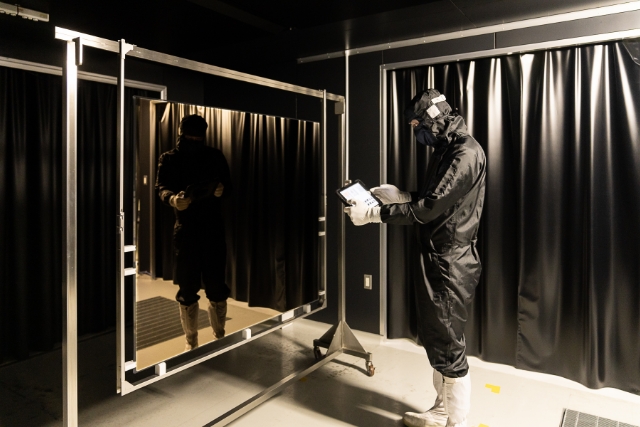PRODUCT
05Custom-Made Blanks
We offer customization of the optical characteristics and color of Cr films, including their reflectance, transmittance, substrate size, thickness, and shape, to meet your needs to the extent possible.
The following is just a sample of the customized specifications we have provided in the past. Please feel free to contact us regarding how the technologies we have developed can help you.
Examples of Customized Specifications
-
Customized Forms
We can design production jigs and tools in-house, allowing us to create jigs and tools for processing boards with irregular sizes and special shapes.
・Long boards: We have experience with long/short ratios of 1:5 to 1:20.
・Oddly shaped boards: Octagonal substrates with large corners, gear-shaped substrates, etc.
※Oddly shaped boards may require customer supply. -
Masking Film Deposition
Creating a jig allows not depositing film on specified parts of the board or coating only specified areas.
・Peripheral edging: Masking to a specified width from board edges.
・Partial deposition: Deposition on only portions of the board.Used for multi-gradation masks, etc.
※It is not possible to mask extremely fine areas. -
Film Thickness and Optical Density
We can provide the total film thickness you need, from about 100–2500 Å.
Margins from 1000 Å are ±10%. Please contact us if you require lower values.
Optical densities (OD) vary depending on the control of the light-shielding film (Cr), and we have used high-density products ¬including OD4.0, OD5.0, and OD7.0.
※OD 5.0 and above are guaranteed based on conversion values by film thickness. -
Reflectance and Coloration
Reflectance and baseline change with control of the oxide film (CrO).
In addition, the membrane surface coloration changes depending on the designed baseline wavelength.
Reflectance examples: 2% or less at 436 nm, 5% or less at 570–630 nm, etc.
Coloration examples: Bronze at a 436-nm baseline, navy blue at a 600-nm baseline, etc.
※Such requirements are often seen in optical component applications. -
Film Resistance Control
Resistance control is also possible by adjusting the Cr film composition.
Compared to a standard low reflection 2-layer film (L) with film resistance 12–13 Ω/□, we have produced films with low resistances of 5.0 Ω/□ or less, and high resistances of 50–90 Ω/□. -
Gravure Films for Glass Etching
These are M-type films with a thicker first-layer oxide film than in three-layer film glass. This oxide film plays a protective role during glass etching.
Film composition: Aiming at glass-CrO/500 Å + Cr/870 Å + CrO/300 Å -
Antistatic (EP) Films
An extremely thin metal film is formed between the glass and the Cr film to provide conductivity.
This is expected to effectively reduce the occurrence of electrostatic breakdown during the exposure process. -
Backside Film Deposition
Contrast can be provided by depositing a film on the backside (non-patterned surface) of a patterned substrate and applying a film with a different color appearance.
We have even performed resist coating for patterning on both sides.
※Please note that there will be differences in deposition finish between front and back surfaces.
OTHER PRODUCTS
- 01Mask Blanks
- 02BM Blanks
- 03Handling Jigs and Cases
- 04Thick Film Resist Coatings
-
05Custom-Made Blanks

